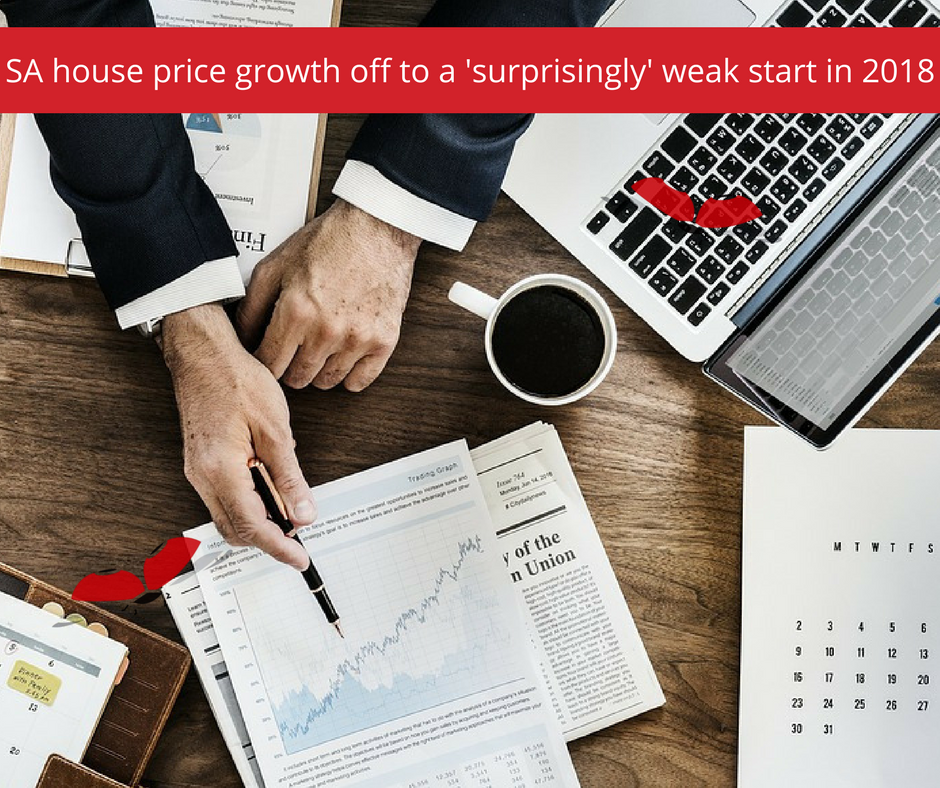
March 2018 saw the FNB House Price Index growing by a slower 1% year-on-year, down from a revised 2.7% in February, and from a high of 5.1% reached in November 2017.
John Loos, household and property sector strategist at FNB, says this implies a weak start to 2018, with year-on-year house price growth for the 1st quarter at only 2.6%, despite indications of improved national sentiment and an improved economy early in the year.
But one key additional constraint on the national house price growth rate of late, has been the “normalisation” of house price growth in the Western Cape. While not long ago, the Western Cape’s relatively strong house price growth was a boost to national average price growth, lately it has become “pedestrian" like the rest, says Loos.
In real terms, when adjusting for CPI (Consumer Price Index) inflation, year-on-year house price deflation of -1.3% was recorded in February, with CPI inflation in that month measuring 4.0% year-on-year, compared to house price growth of 2.7%, the report notes.
Lag time in price growth despite improved sentiment
While sentiment and economic conditions may be improving, house price growth might only respond with a lag, says Loos. “We remain of the belief that such a national market strengthening, albeit a mild one, will still materialise in 2018, but there can be a lag time between when residential demand starts to pick up until when year-on-year house price growth starts to strengthen, and that lag is perhaps what we are still seeing in the 1st quarter of 2018.”
Western Cape no longer a boost to national average
Western Cape price growth has “defied gravity” in recent years, recording far stronger house price growth than any other major region, and until recently was a boost to the national average house price growth rate, says Loos.
He notes this ‘boost’ has steadily fallen away, with the FNB Western Cape House Price Index having slowed to only 1.5% year-on-year growth for the 1st quarter, now below the National Average House Price growth rate of 2.6% for the 1st quarter of 2018.
“Given that the Western Cape is the second-largest housing market by value, a slowdown in its house price growth all the way from 10.9% in the 2nd quarter of 2016 to 1.5% in the 1st quarter of this year makes a major difference to the province’s impact on the national average.”
He says the slowing in the Western Cape’s house price growth is no surprise, with the region’s home values having become relatively “unaffordable” in recent years, severely restricting the pace of new entrants, and possibly giving affluent semigrants from other regions in SA second thoughts of late.
The severe drought may also be starting to play a “cooling” role on the economy as well as on the province’s housing market, adds Loos.
Gauteng still seeing low growth
The FNB Barometer notes that the Western Cape’s slowing house price growth has not yet coincided with an expected strengthening in house price growth in Gauteng.
“We have been more upbeat about housing market strength to come in Gauteng, the country’s largest market, but as yet have not seen this translate into any house price growth acceleration. The FNB Gauteng House Price Index still showed slow year-on-year growth of 1.4% in the 1st quarter of this year.”
Real house price growth declines
And so we await some “lift” for the national housing market from improved national sentiment and economic performance, says Loos. “The Firstrand economic growth forecast for 2018 is 1.8%, mildly higher than 2017’s recorded 1.3%, and of course we have had an isolated 25 basis point interest rate cut in March by the SARB, a move which may boost home buyer confidence mildly.”
But while we wait, the country’s real house price “correction” continues, with house price growth remaining below general inflation as measured by the CPI (Consumer Price Index), he says. “In real terms (adjusted for CPI), the FNB House Price Index has declined by -6.1% since December 2015, after some prior mild recovery from 2009 to 2014/15. This 2016/17 real price decline was on the back of a very weak economic growth rate in recent years, along with the lagged impact of interest rate hiking from early-2014 to early-2016.”
Viewing the longer term picture, Loos says the index is down by -20.9% since the end of 2007, which marked the final stages of SA’s pre-2008 housing bubble.
“The real index remains high by its historic standards, however, still 61.4% up on January 2001, a date just before boom time house prices began to skyrocket.”